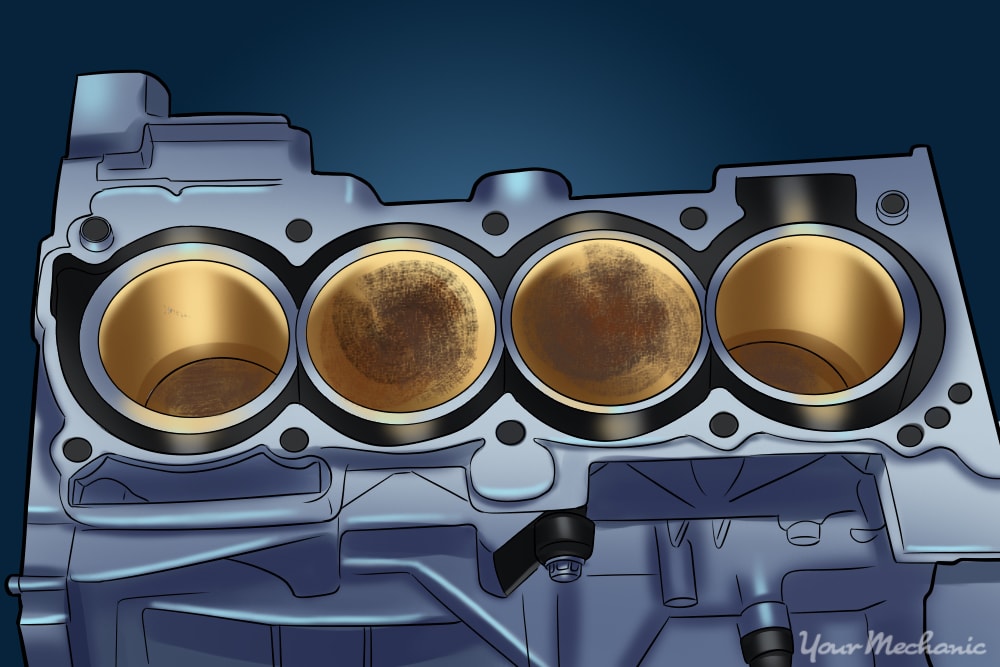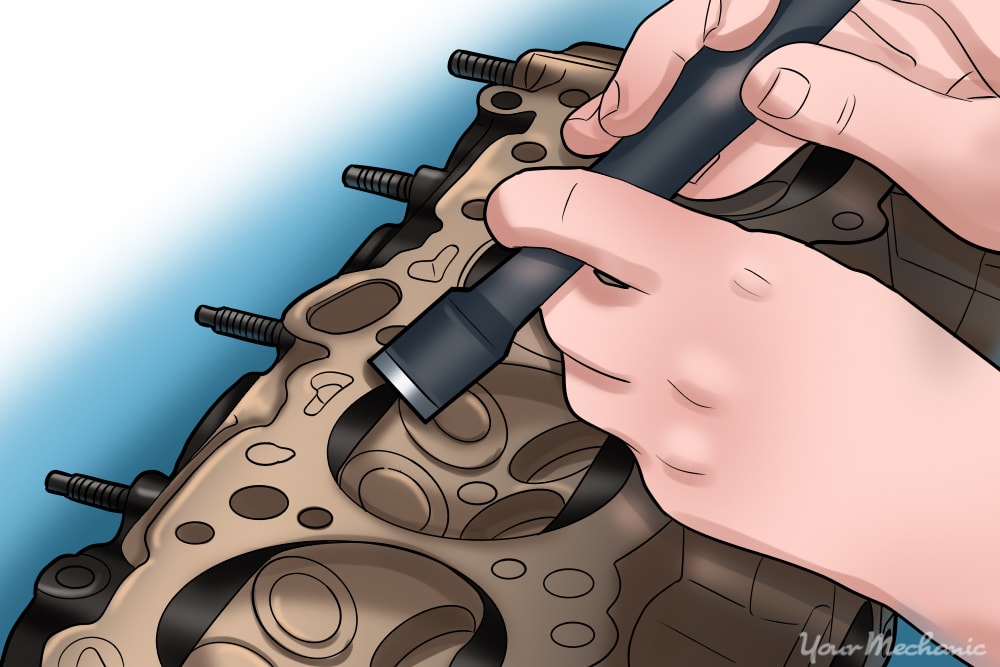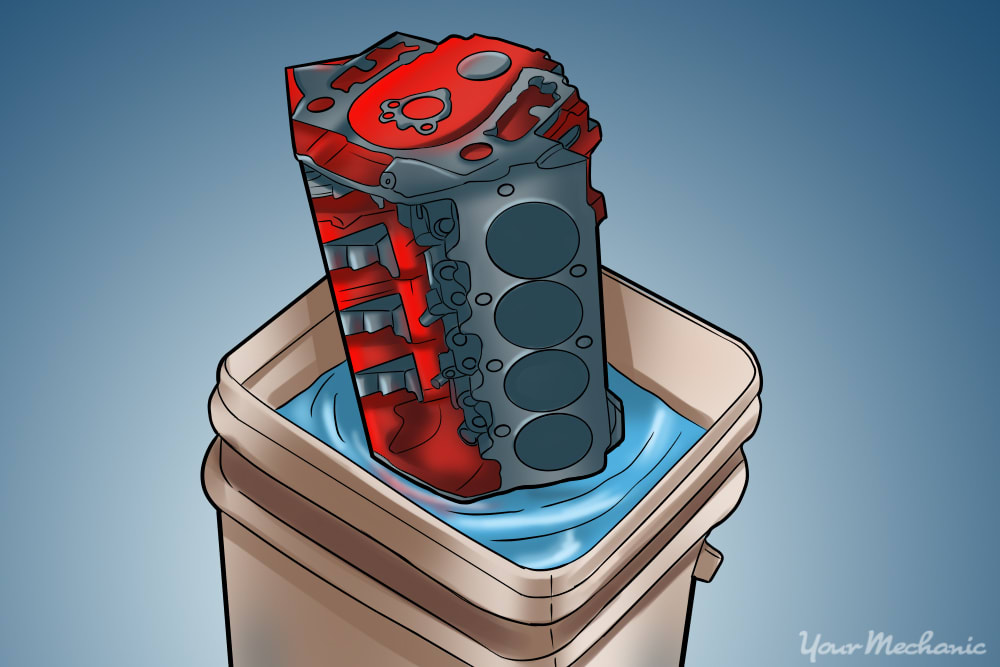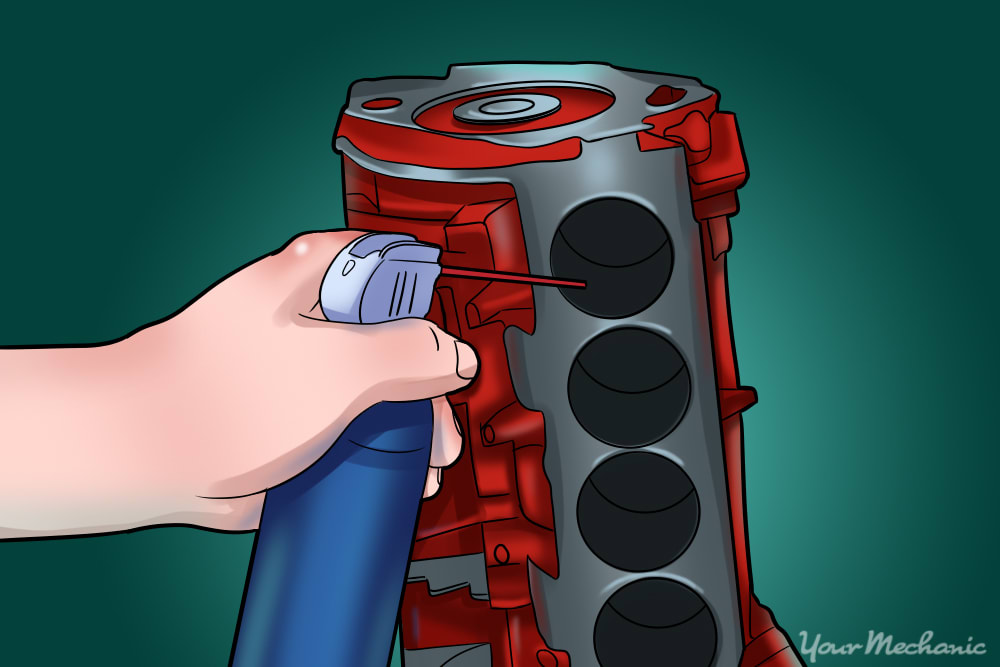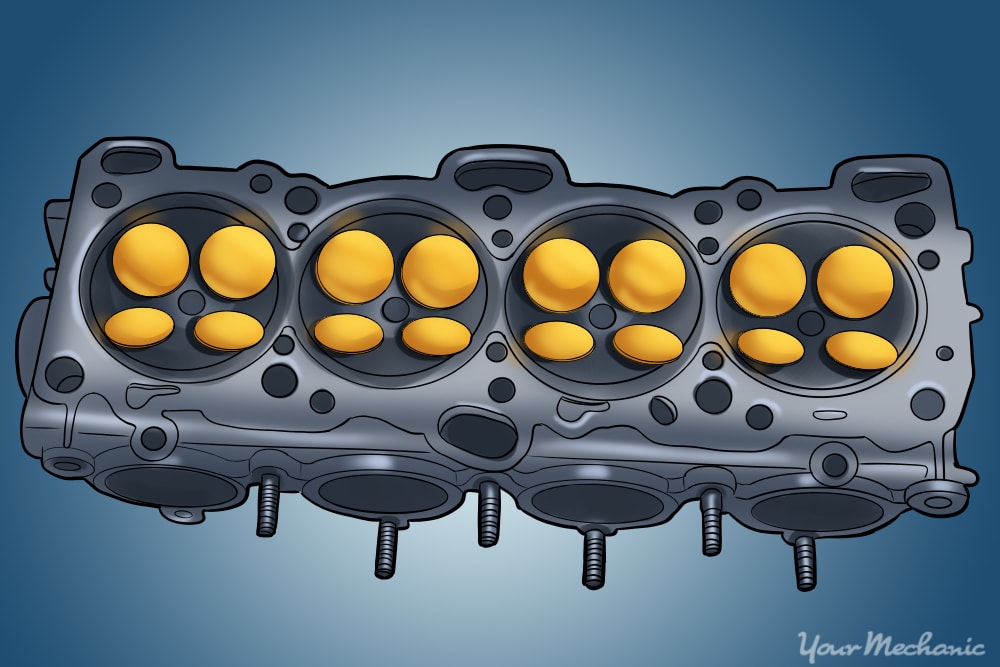

The engine cylinder head has many passages for coolant and oil and can build up dirt over the life of the engine. Once the cylinder head is removed from the vehicle, it becomes a simple matter to clean up the deposits of sludge and dirt on it.
Cylinder head operation is complex and to learn more about its operation.
There a multiple ways to perform this cleaning service. This article will cover the home cleaning process for cleaning of cylinder heads that have already been removed from the vehicle.
- Tip: If the engine is being rebuilt and the engine is having machine work done, get the cylinder head cleaned at the machine shop using a blasting machine.
Part 1 of 1: Clean the cylinder head at home
Materials Needed
- Brake cleaner or parts cleaner
- Compressed air
- Chemical resistant gloves
- Eye protection
- Large tub or bucket
- Paper towels or shop rags
- Plastic scraper tool
Step 1: Preparing to clean. Cleaning the cylinder heads can be a dirty process and can be quite time consuming.
Put your gloves on to protect your hands from the chemicals used to clean the cylinder heads. Put the cylinder head in a large tub or container so that you can work on it.
Step 2: Remove old head gasket material from bottom of head. Chances are some of the old head gasket will be stuck to the head and it will need to be removed first. Use a plastic scraper to carefully remove the old head gasket material without scratching the surface of the cylinder head. This may take a few minutes to complete and will leave a smoother surface when complete.
- Warning: Do not use any tool that can scratch the cylinder head mating surface. As this is a machined surface, any scratches could cause leaks and head gasket failure later.
Step 3: Cleaning the cylinder head. A parts cleaner or brake cleaner will work well for cleaning the cylinder head. With the cylinder head in the tub, begin to clean the head using a shop rag sprayed with the cleaner to remove the oil and grime.
Clean the cylinder head as best as possible, including any passages and parts that can be reached easily by hand. You can leave out any areas with nooks and crannies that may be hard to reach.
Step 4: Soak the cylinder head. Soak the cylinder head in warm water to soften up any remaining dirt and particles. This is done to clean the various oil and coolant passages and galleries that cannot be reached by hand. The warm water will help remove any remaining oil and dirt left behind from the first round of cleaning.
Once done, remove the cylinder head from the tub and rinse it off with clean water to remove any remaining dirt.
Step 5: Use compressed air on the passages. Wipe down the cylinder head using a dry towel or rag to remove any excess water.
Blow compressed air into all the passages until no more water comes out. This is done to clear all the water from the passages that may otherwise take days to dry completely.
Set the cylinder head somewhere safe to dry the rest of the water before adding a new head gasket and completing the reassembly and installation process.
It can be a lot of work to clean cylinder heads properly but it is needed to remove all the dirt and engine buildup that accumulates over the years. This dirt can affect engine performance if not removed entirely.
If you are not comfortable with cleaning the cylinder head on your own, ask for help from a certified mechanic.


